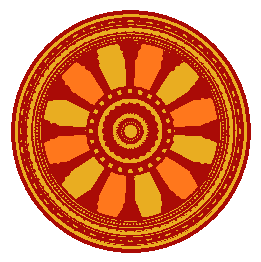
:: International Transaction Journal of Engineering, Management, & Applied Sciences & Technologies
http://TuEngr.com

ISSN 2228-9860
eISSN 1906-9642
CODEN: ITJEA8
FEATURE PEER-REVIEWED ARTICLE
Vol.12(10) (2021) |
A Review on Wire Electrical Discharge Machining of Advanced Conductive Materials
 Md Ehsan Asgar (School of Information, Communication and Technology (USICT)Guru Gobind Singh Indraprastha University, New Delhi, 110078, INDIA),
Md Ehsan Asgar (School of Information, Communication and Technology (USICT)Guru Gobind Singh Indraprastha University, New Delhi, 110078, INDIA),
Ajay Kumar Singh Singholi (Mechanical and Automation Engineering Department, GB Pant Government Engineering College, New Delhi, 110020, INDIA).
Disciplinary: Advanced Manufacturing and Technology.
doi: 10.14456/ITJEMAST.2021.206
Keywords: Advanced materials; Wire EDM; Industry 4.0; Wire EDM Process optimization; EDM machine; Wire EDM Process development; Type of dielectric fluid flow; Components of wire EDM.
AbstractThe evolution of advanced engineering materials, including superalloys, metal matrices, and ceramics, has led to advancements in the area of material engineering. These materials are not easily machined due to their properties such as rigidity, strength, hardness, and durability, and they face limitations in smooth machining with conventional machining. Machining of these materials is successfully achieved by using a non-conventional approach to machining. Wire electrical discharge machining (wire EDM) is an approach being used to create and manufacture three-dimensional (3D) complex structures and geometry with high cutting speed to achieve higher efficiency and productivity, good surface quality, and better accuracy of these advanced engineering materials. The article illustrates the evolution of the wire EDM process with various wire electrodes for advanced materials with an emphasis on the most acceptable machining conditions. The material removal rate (MRR), surface roughness (SR), kerf thickness (Kw), and the surface characteristics acquired during the machining were taken into discussion. The literature of work published on wire EDM shows that the research is directed towards more recent aspects of wire EDM for advanced materials in the field of optimization.Paper ID: 12A10Q
Cite this article:
Asgar, M. E., and Singholi, A. K. S. (2021). A Review on Wire Electrical Discharge Machining of Advanced Conductive Materials. International Transaction Journal of Engineering, Management, & Applied Sciences & Technologies, 12(10), 12A10Q, 1-10. http://doi.org/10.14456/ITJEMAST.2021.206
References
- L. Slatineanu, O. Dodun, M. Coteata, G. Nagi, and I. B. Bancescu, "Wire Electrical Discharge Machining—A Review," Machines, vol. 8, no. 4, pp. 1-28, 2020, DOI: 10.3390/machines8040069.
- U. H. Vala and M. R. Sama, "A review on different effects on flushing of dielectric fluid in WEDM," Int. J. Adv. Res. Sci. Eng., vol. 6, no. 2, pp. 37-44, 2017.
- A. Okada, Y. Uno, S. Onoda, and S. Habib, "Computational fluid dynamics analysis of working fluid flow and debris movement in wire EDMed kerf," CIRP Ann. - Manuf. Technol., vol. 58, pp. 209-212, 2009.
- C. Zhang, "Effect of machining fluid on the process performance of wire electrical discharge machining of nanocomposite ceramic," 2015, DOI: 10.1051/C.
- A. Okada, Y. Uno, M. Nakazawa, and T. Yamauchi, "Evaluations of spark distribution and wire vibration in wire EDM by high-speed observation," CIRP Ann. - Manuf. Technol., vol. 59, no. 1, pp. 231-234, 2010, DOI: 10.1016/j.cirp.2010.03.073
- Z. Yueqin, L. Zhidong, X. Lixia, and W. Wei, "Interelectrode discharge mechanism in high-speed wire electrical discharge machining," Int. J. Adv. Manuf. Technol., vol. 84, no. 9-12, pp. 2637-2647, 2016.
- S. Kumar, B Mitra, and S. Dhanabalan, "The state of Art: Revolutionary 5-Axis CNC Wire EDM & its recent developments Small Scale Plant for Essential Oil Extraction/Distillation View project WEDM Machining performance determination for superalloys View project The state of Art: Revolutionary 5-Axis CNC Wire EDM & its recent developments," 2018.
- K. Kanlayasiri and S. Boonmung, "Effects of wire-EDM machining variables on surface roughness of newly developed DC 53 die steel: Design of experiments and regression model," J. Mater. Process. Technol., vol. 192-193, pp. 459-464, Oct. 2007, DOI: 10.1016/j.jmatprotec.2007.04.085.
- J. P. Davim, Machining: Fundamentals and recent advances. Springer London, 2008.
- N. G. Patil and P. K. Brahmankar, "Determination of material removal rate in wire electro-discharge machining of metal matrix composites using dimensional analysis," Int. J. Adv. Manuf. Technol., vol. 51, no. 5-8, pp. 599-610, Nov. 2010, DOI: 10.1007/s00170-010-2633-3
- M. Ehsan Asgar and A. K. Singh Singholi, "Parameter study and optimization of WEDM process: A Review," in IOP Conference Series: Materials Science and Engineering, 2018, vol. 404, no. 1, DOI: 10.1088/1757-899X/404/1/012007.
- Y. Huang et al., "Optimization of cutting conditions of YG15 on rough and finish cutting in WEDM based on statistical analyses," Int. J. Adv. Manuf. Technol., vol. 69, no. 5-8, pp. 993-1008, 2013.
- P. Saha, D. Tarafdar, S. K. Pal, P. Saha, A. K. Srivastava, and K. Das, "Modeling of wire electro-discharge machining of TiC/Fe in situ metal matrix composite using normalized RBFN with enhanced k-means clustering technique," Int. J. Adv. Manuf. Technol., vol. 43, no. 1-2, pp. 107-116, Jul. 2009, DOI: 10.1007/s00170-008-1679-y
- A. Muttamara, Y. Fukuzawa, N. Mohri, and T. Tani, "Probability of precision micro-machining of insulating Si3N 4 ceramics by EDM," in Journal of Materials Processing Technology, Sep. 2003, vol. 140, no. 1-3 SPEC., pp. 243-247, DOI: 10.1016/S0924-0136(03)00745-3
- N. Mohri, Y. Fukuzawa, T. Tani, and T. Sata, "Some Considerations to Machining Characteristics of Insulating Ceramics-Towards Practical Use in Industry," 2002. DOI: 10.1016/S0007-8506(07)61490-5
- J. Kozak, K. P. Rajurkar, and N. Chandarana, "Machining of low electrical conductive materials by wire electrical discharge machining (WEDM)," in Journal of Materials Processing Technology, Jun. 2004, vol. 149, no. 1-3, pp. 266-271, DOI: 10.1016/j.jmatprotec.2003.11.055
- R. Wuthrich and V. Fascio, "Machining of non-conducting materials using electrochemical discharge phenomenon - An overview," Int. J. Mach. Tools Manuf., vol. 45, no. 9, pp. 1095-1108, 2005, DOI: 10.1016/j.ijmachtools.2004.11.011
- B. C. Tilghman, "US Patent 416873," no. 416, 1889.
- I. Maher, A. A. D. Sarhan, and M. Hamdi, "Review of improvements in wire electrode properties for longer working time and utilization in wire EDM machining," Int. J. Adv. Manuf. Technol., vol. 76, 2014.
- J. Kapoor, S. Singh, and J. S. Khamba, "Effect of cryogenic treated brass wire electrode on material removal rate in wire electrical discharge machining," Proc. Inst. Mech. Eng. Part C J. Mech. Eng. Sci., vol. 226, no. 11, pp. 2750-2758, Nov. 2012, DOI: 10.1177/0954406212438804
- H. Gotoh, T. Tani, M. Okada, A. Goto, T. Masuzawa, and N. Mohri, "Wire electrical discharge milling using a wire guide with reciprocating rotation," in Procedia CIRP, 2013, vol. 6, pp. 199-202, DOI: 10.1016/j.procir.2013.03.051
- C. Zhang, "Effect of wire electrical discharge machining (WEDM) parameters on surface integrity of nanocomposite ceramics," Ceram. Int., vol. 40, no. 7 PART A, pp. 9657-9662, 2014, DOI: 10.1016/j.ceramint.2014.02.046
- Z. Zhang, W. Ming, G. Zhang, Y. Huang, X. Wen, and H. Huang, "A new method for on-line monitoring discharge pulse in WEDM-MS process," Int. J. Adv. Manuf. Technol., vol. 81, no. 5-8, pp. 1403-1418, Nov. 2015, DOI: 10.1007/s00170-015-7261-5
- Z. Chen, G. Zhang, and H. Yan, "A high-precision constant wire tension control system for improving workpiece surface quality and geometric accuracy in WEDM," Precis. Eng., vol. 54, pp. 51-59, Oct. 2018, DOI: 10.1016/j.precisioneng.2018.05.001
- W. S. Zhao, B. X. Jia, Z. L. Wang, and F. Q. Hu, "Study on Block Electrode Discharge Grinding of Micro Rods," Key Eng. Mater., vol. 304-305, pp. 201-205, 2006, DOI: 10.4028/www.scientific.net/kem.304-305.201
- D. Y. Sheu, "Microelectrode tools manufacturing by hybrid circuits twin-wire electrodischarge grinding," Mater. Manuf. Process., vol. 25, no. 10, pp. 1142-1147, Oct. 2010, DOI: 10.1080/10426914.2010.502951
- L. Mingqi, L. Minghui, and X. Guangyao, "Study on the variations of form and position of the wire electrode in WEDM-HS," Int. J. Adv. Manuf. Technol., vol. 25, no. 9-10, pp. 929-934, May 2005.
- A. Muttamara, P. Janmanee, and Y. Fukuzawa, "A Study of Micro-EDM on Silicon Nitride Using Electrode Materials," International Transaction Journal of Engineering, Management, & Applied Sciences & Technologies, vol. 1, no. 1, 2010.
- B. M. Schumacher, "After 60 years of EDM the discharge process remains still disputed," J. Mater. Process. Technol., vol. 149, pp. 376-381, 2004, DOI: 10.1016/j.matprotec.2003.11.060.
- M. E. Ehsan and A. K. S. Singholi, "Machinability Characteristics of Inconel 718 Superalloy," Solid State Technol., vol. 63, no. 6, pp. 11707-11715, 2020.
- J. Y. Jia, Y. Q. Wang, S. Q. Yang, and W. H. Li, "Study of the effects of important factors on the diameter accuracy of micro-shafts fabricated by TMTF-WEDG," Int. J. Adv. Manuf. Technol., vol. 108, no. 9-10, pp. 3001-3020, Jun. 2020, DOI: 10.1007/s00170-020-05412-9
- Z. N. Guo, T. C. Lee, T. M. Yue, and W. S. Lau, "Study on the machining mechanism of WEDM with ultrasonic vibration of the wire," 1997. DOI: 10.1016/S0924-0136(97)00021-6
- K. P. Rajurkar, W. M. Wang, and J. A. Mcgeough, "WEDM Identification and Adaptive Control for Variable-Height Components," 1994. DOI: 10.1016/S0007-8506(07)62195-7
- M. T. Yan, Y. S. Liao, and C. C. Chang, "On-line Estimation of Workpiece Height by Using Neural Networks and Hierarchical Adaptive Control of WEDM," Springer-Verlag London, 2001.
- O. Dodun, A. M. Goncalves-Coelho, L. Slatineanu, and G. Nagit, "Using wire electrical discharge machining for improved corner cutting accuracy of thin parts," Int. J. Adv. Manuf. Technol., vol. 41, no. 9-10, pp. 858-864, 2009, DOI: 10.1007/s00170-008-1531-4
- W. Wang, Z. D. Liu, Z. J. Tian, Y. H. Huang, and Z. X. Liu, "High efficiency slicing of low resistance silicon ingot by wire electrolytic-spark hybrid machining," J. Mater. Process. Technol., vol. 209, no. 7, pp. 3149-3155, Apr. 2009, DOI: 10.1016/j.jmatprotec.2008.07.029
- R. A. Kapgate, V. H. Tatwawadi, and J. P. Modak, "Process Parameters Modelling Of Wire Electrical Discharge Machining On Al/Sic 10% MMC Using Dimensional Analysis," Int. J. Sci. Eng. Res., vol. 4, no. 4, 2013.
- R. N. Marigoudar and K. Sadashivappa, "Effect of Machining Parameters on MRR and Surface Roughness in Machining of ZA43 / SiCp Composite by WEDM," Int. J. Appl. Sci. Eng., vol. 11, pp. 317-330, 2013.
- A. Goswami and J. Kumar, "Investigation of surface integrity, material removal rate and wire wear ratio for WEDM of Nimonic 80A alloy using GRA and Taguchi method," Eng. Sci. Technol. an Int. J., vol. 17, no. 4, pp. 173-184, 2014, DOI: 10.1016/j.jestch.2014.05.002
- V. Kumar, V. Kumar, and K. K. Jangra, "An experimental analysis and optimization of machining rate and surface characteristics in WEDM of monel-400 using RSM and desirability approach," J. Ind. Eng. Int., vol. 11, no. 3, pp. 297-307, Jan. 2015, DOI: 10.1007/s40092-015-0103-0
- U. Caydas and M. Ay, "WEDM cutting of inconel 718 nickel-based superalloy: Effects of cutting parameters on the cutting quality," Mater. Tehnol., vol. 50, no. 1, pp. 117-125, 2016, DOI: 10.17222/mit.2015.026
- A. Goyal, "Investigation of material removal rate and surface roughness during wire electrical discharge machining (WEDM) of Inconel 625 super alloy by cryogenic treated tool electrode," J. King Saud Univ. - Sci., vol. 29, no. 4, pp. 528-535, Oct. 2017, DOI: 10.1016/j.jksus.2017.06.005
- D. R. Unune and H. S. Mali, "Experimental investigation on low-frequency vibration assisted micro-WEDM of Inconel 718," Eng. Sci. Technol. an Int. J., vol. 20, no. 1, pp. 222-231, Feb. 2017, DOI: 10.1016/j.jestch.2016.06.010
- M. Golabczak, P. Maksim, P. Jacquet, A. Golabczak, K. Wozniak, and C. Nouveau, "Investigations of geometrical structure and morphology of samples made of hard machinable materials after wire electrical discharge machining and vibro-abrasive finishing," Materwiss. Werksttech, vol. 50, no. 5, pp. 611-615, May 2019, DOI: 10.1002/mawe.201800208
- A. Mostafapor and H. Vahedi, "Wire electrical discharge machining of AZ91 magnesium alloy; Investigation of effect of process input parameters on performance characteristics," Eng. Res. Express, vol. 1, no. 1, 2019, DOI: 10.1088/2631-8695/ab26c8
- K. Mouralova et al., "Precision machining of nimonic C 263 super alloyusing WEDM," Coatings, vol. 10, no. 6, pp. 1-20, Jun. 2020, DOI: 10.3390/coatings10060590
- S. Dzionk and M. S. Siemiatkowski, "Studying the effect of working conditions on WEDM machining performance of super alloy inconel 617," Machines, vol. 8, no. 3, 2020, DOI: 10.3390/MACHINES8030054
- D. Ghodsiyeh, A. Golshan, and J. A. Shirvanehdeh, "Review on Current Research Trends in Wire Electrical Discharge Machining (WEDM)," 2013. [Online]. Available: www.indjst.org.
- F. Klocke, L. Welschof, T. Herrig, and A. Klink, "Evaluation of contemporary wire EDM for the manufacture of highly loaded titanium parts for space applications," in Procedia Manufacturing, vol. 18, pp. 146-151, 2018, DOI: 10.1016/j.promfg.2018.11.019
Other issues:
Vol.12(10)(2021)
Vol.12(9)(2021)
Vol.12(8)(2021)
Archives
Call-for-Papers
Call-for-Scientific PapersCall-for-Research Papers: ITJEMAST invites you to submit high quality papers for full peer-review and possible publication in areas pertaining engineering, science, management and technology, especially interdisciplinary/cross-disciplinary/multidisciplinary subjects.
To publish your work in the next available issue, your manuscripts together with copyright transfer document signed by all authors can be submitted via email to Editor @ TuEngr.com (no space between). (please see all detail from Instructions for Authors)
Publication and peer-reviewed process:
After the peer-review process (4-10 weeks), articles will be on-line published in the available next issue. However, the International Transaction Journal of Engineering, Management, & Applied Sciences & Technologies cannot guarantee the exact publication time as the process may take longer time, subject to peer-review approval and adjustment of the submitted articles.